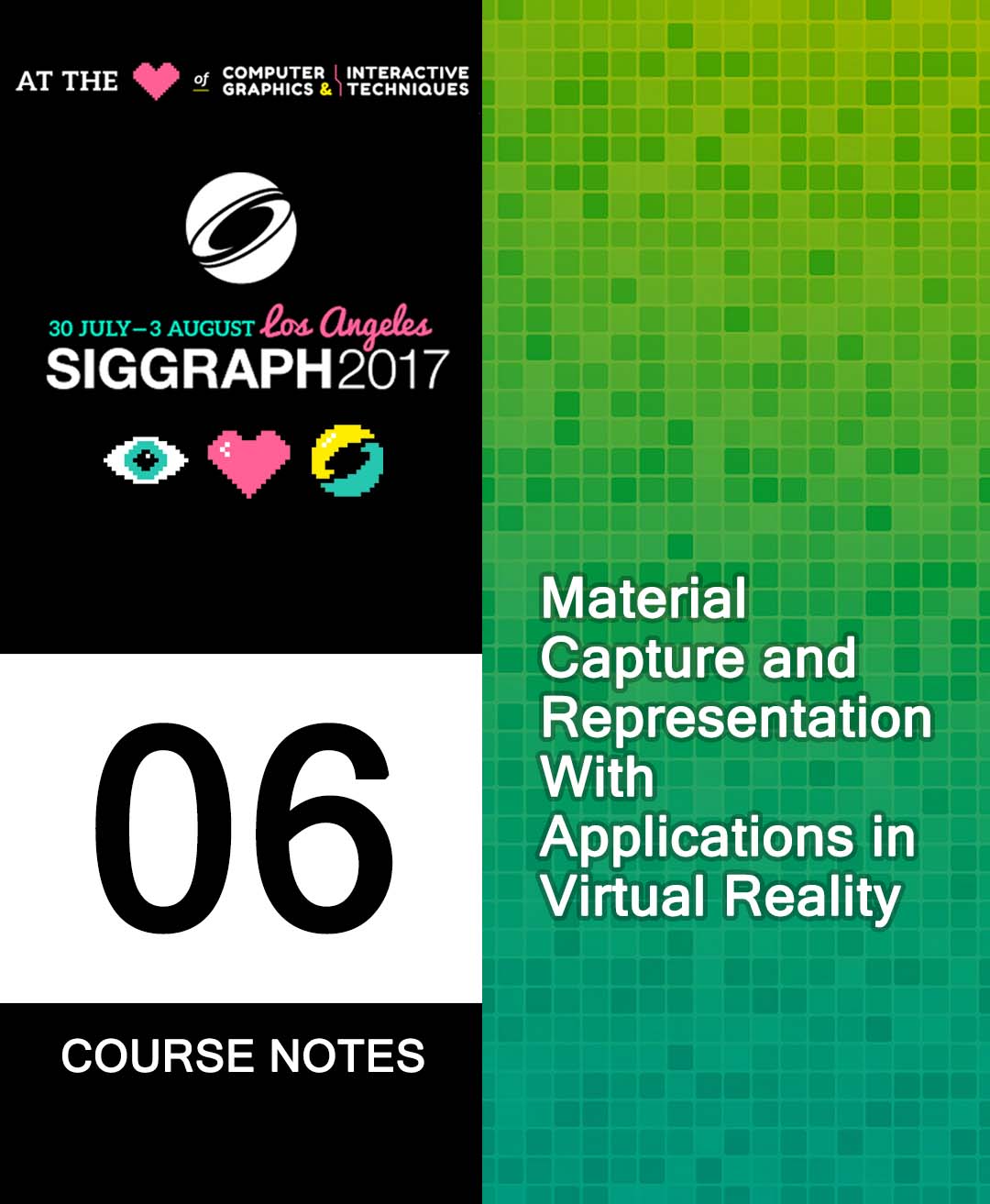“Material Capture and Representation With Applications in Virtual Reality” by Ghosh, Hall, Glencross and Guarnera
Conference:
Type(s):
Entry Number: 06
Title:
- Material Capture and Representation With Applications in Virtual Reality
Course Organizer(s):
Presenter(s)/Author(s):
Abstract:
Prerequisites
Some familiarity with graphics concepts and a basic background in vectors, probability density functions, and matrix factorization.
Level
Intermediate
Who Should Attend
Computer graphics students (undergraduate and introductory graduate and intermediate-advanced). Practitioners in VR, VFX, and gaming. Computer graphics researchers. Anyone with an interest in acquisition and use of real material models.
Description
Photorealistic rendering of real-world environments and high quality material models are becoming increasingly important in a range of different areas, including visual effects, interior and exterior modelling, architectural modelling, cultural heritage, computer games, automotive design, and virtual reality. In the real world, viewer perception of objects depends on lighting; how the light is reflected, scattered, and absorbed by the surface; and the impact these characteristics have on material appearance. Because reproducing viewer perception requires understanding how materials interact with light, representation and acquisition of material models has become an active research area.
This course describes the state of the art in material appearance acquisition and modelling, ranging from opaque materials best described by BRDFs, to fabrics, for which volumetric models and collection of fiber models have gained increasing importance in recent years. It also summarizes the need for high-quality material models in the interior design industry. A case study uses Yulio, a new platform for creation, delivery, and visualization of virtual reality, to highlight the importance of appropriate material models and visually demonstrate the importance of acquired material models and reverse-engineered cloth models in immersive experiences for architecture and design.




